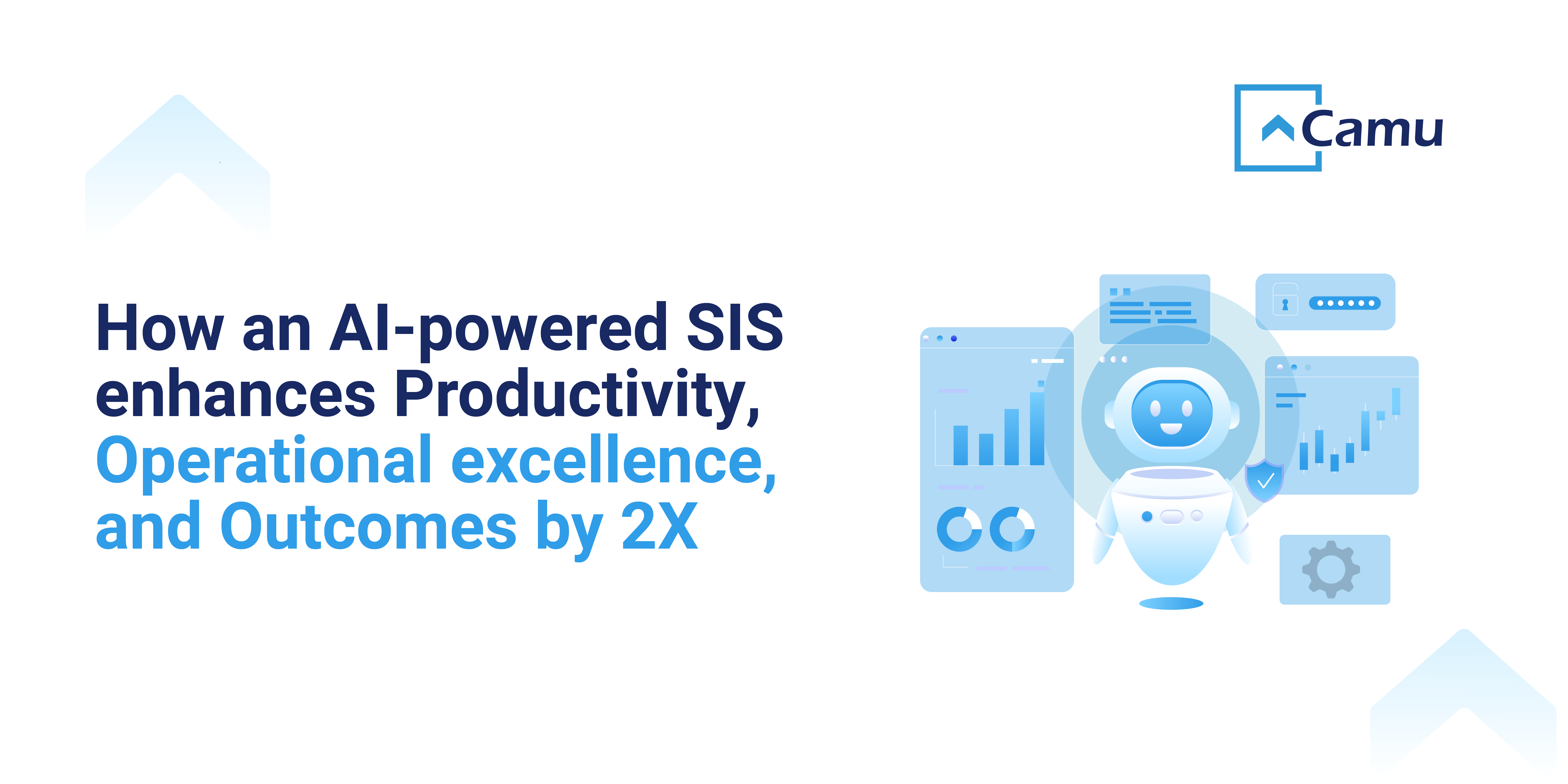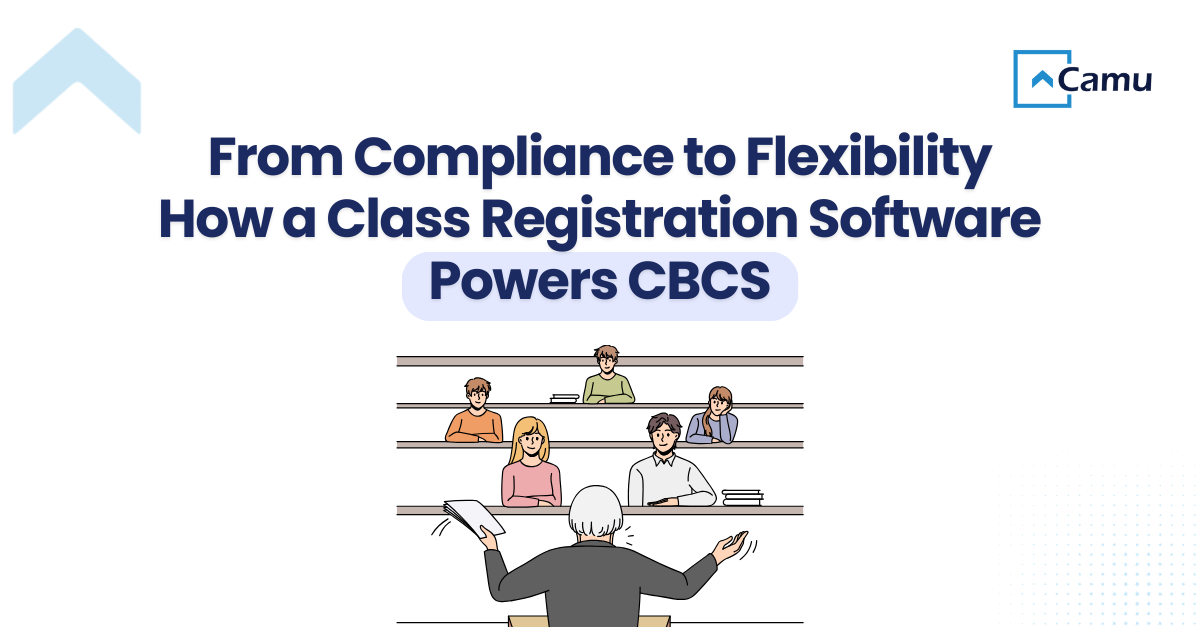Table of Contents:
Why CBCS Becomes Difficult Without Automation
How Class Registration Software Solves CBCS Challenges
CBCS Without the Burden of Administration
From Overwhelming to Student-Friendly: A Real CBCS Success Story
Today's higher education is built on the Choice-Based Credit System (CBCS), which gives students the flexibility to select courses from a variety of subject areas, study electives, and set their own learning pace.
While CBCS empowers students with choice, it also pressures institutions to maintain regulatory compliance, verify requirements, allocate faculty resources, and prevent administrative errors.
Traditional methods of managing course enrollment struggle to keep up. This is where a perfect class registration software transforms the game.
Why CBCS Becomes Difficult Without Automation
Fundamentally, CBCS requires that students be able to choose classes from a variety of subject areas, earn credits, and customize their learning to fit their career goals. But institutions need to make sure:
Compliance with the credit requirements
Implementation of co-requisites and other requirements
Transparency regarding enrolment restrictions
Real-time demand monitoring and resource allocation for courses
In the absence of automation, this becomes too much to handle. A strong class registration system ensures that all regulations are adhered to while providing a smooth learning environment for students.
How Class Registration Software Solves CBCS Challenges
Automated Compliance, Zero Bottlenecks
Credit limits, eligibility, and prerequisites are among the strict checks that CBCS demands. Verifying these manually for thousands of students is prone to mistakes. Real-time validation is automated by class registration software, ensuring that only qualified students can enroll in specific courses. By doing this, disputes are avoided, faculty involvement is decreased, and trust in the process is increased.
Flexibility with Personalization
Beyond compliance, CBCS thrives on flexibility. Students should be able to choose electives, explore interdisciplinary subjects, and plan their academic path confidently. A modern class registration software empowers them to:
View available courses across programs that align with their career goals.
Track credit accumulation toward graduation.
Receive personalized suggestions to balance workload.
This level of personalization enhances student engagement and aligns perfectly with CBCS principles.
Transparency for Institutions and Students
Lack of visibility is a common complaint in CBCS; administrators find it difficult to monitor course demand, and students frequently don't know why their registration was rejected. Transparency is important to both parties while using class registration software. Students can view real-time seat availability and ineligibility reasons, and administrators can view dashboards that display faculty workload, popular electives, and enrolment trends.
In addition, the pre-enlistment option enables institutions to anticipate demand and plan more effectively.
Mobile Access for Anytime Registration
Students today demand mobile-first access. At Camu, we allow students to register through our mobile app, MyCamu, which makes the procedure simple and available from any location. Students can search for electives, register, and get instant confirmations whether they are on campus or learning remotely. This mobile-first strategy eliminates in-person lines, enhances accessibility, and conforms to Gen Z learners' digital expectations.
Real-Time Updates and Analytics
Course choices change quickly, making CBCS dynamic. Institutions are able to efficiently allocate instructors, evaluate demand, and adjust class sizes because of the real-time updates that class registration software provides. Analytics dashboards showing trends in course demand, underutilised electives, and enrollment patterns help make decisions even easier.
CBCS Without the Burden of Administration
Although CBCS aims to promote academic freedom, it runs the risk of becoming an administrative burden in the absence of technology. When educational institutions use class registration software, they enter a new era of efficiency, flexibility, and personalisation, going far beyond the limitations of manual processes.
These programs facilitate CBCS adoption for administrators and increase student satisfaction by automating rules, facilitating mobile access, and offering transparency.
From Overwhelming to Student-Friendly: A Real CBCS Success Story
If your institution is finding CBCS course registration overwhelming, the good news is you don’t have to reinvent the wheel. The experience of Rathinam Group of Institutions shows how the right class registration software can transform CBCS from a compliance-heavy burden into a flexible, student-friendly process.
Explore how Camu’s class registration software can help your university deliver both compliance and flexibility, just as it did for Rathinam.





